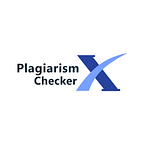Navigating the Gray Area: Paraphrasing vs. Plagiarism
In the vast landscape of academia, integrity reigns supreme. However, the line between originality and imitation can sometimes blur, leading to the murky waters of plagiarism. Let’s embark on a journey to navigate this gray area, exploring the nuances of paraphrasing versus plagiarism and unravel why plagiarism is detrimental, how it can be avoided, the role of paraphrasing in maintaining authenticity, and the indispensable use of plagiarism checking software, with a spotlight on Plagiarism Checker X and its verifiable PDF similarity report.
As we navigate the complex terrain of academic writing, the distinction between paraphrasing and plagiarism becomes ever more critical. By understanding the nuances of each and leveraging the power of plagiarism checking software like Plagiarism Checker X, students can navigate this gray area with confidence, ensuring that their writing stands as a beacon of originality, integrity, and excellence in the academic landscape.
Paraphrasing: Honoring Originality Through Rewording
Paraphrasing is a technique used to restate information or ideas from a source in one’s own words while maintaining the original meaning and intent. It involves comprehending the content, digesting its essence, and expressing it in a new form without altering the core message. Paraphrasing allows writers to integrate external sources into their writing while avoiding the pitfalls of direct copying or plagiarism.
Key Characteristics of Paraphrasing:
- Restating ideas or information using different words and sentence structures.
- Retaining the original meaning and intent of the source material.
- Providing proper citation and attribution to acknowledge the original authorship.
- Demonstrating comprehension and critical engagement with the source material.
Paraphrasing is a valuable skill that enables students to engage with complex ideas, synthesize information, and contribute to scholarly discourse in a meaningful way. When done effectively, paraphrasing promotes intellectual honesty, encourages critical thinking, and enhances the credibility of one’s writing.
Plagiarism: Crossing the Line into Academic Dishonesty
Plagiarism, on the other hand, involves the unauthorized use or appropriation of another person’s ideas, words, or work without proper attribution. It encompasses a spectrum of behaviors, ranging from verbatim copying to subtle paraphrasing, that undermine the principles of academic integrity and original scholarship. Plagiarism erodes trust, misrepresents the true extent of one’s knowledge and abilities, and devalues the contributions of others.
Key Characteristics of Plagiarism:
- Copying verbatim or closely paraphrasing without citation.
- Failing to acknowledge the original source or authorship.
- Submitting someone else’s work as one’s own.
- Reproducing ideas or information without adding significant original content or analysis.
Plagiarism is a serious offense with far-reaching consequences, including academic penalties, reputational damage, and legal implications. It undermines the credibility of academic institutions, compromises the integrity of scholarly research, and detracts from the advancement of knowledge and innovation.
Understanding the distinction between paraphrasing and plagiarism is essential for students to navigate the complexities of academic writing ethically and responsibly. By embracing the principles of paraphrasing while adhering to rigorous standards of citation and attribution, students can uphold the ideals of academic integrity and contribute to the pursuit of knowledge with honesty and integrity.
Understanding the Importance of Academic Integrity:
Plagiarism, in all its forms, strikes at the heart of academic integrity. It undermines the principles of honesty, transparency, and intellectual creativity that form the cornerstone of scholarly pursuit. Whether intentional or inadvertent, plagiarism tarnishes the reputation of individuals and institutions alike, eroding trust and credibility in academic discourse.
Avoiding Plagiarism: A Moral Imperative:
Avoiding plagiarism is not merely a matter of adherence to rules and regulations; it is a moral imperative. Students, as stewards of knowledge, have a responsibility to uphold the highest standards of academic honesty and integrity in their writing. This entails proper citation of sources, diligent research practices, and a commitment to original thought and expression.
Harnessing the Power of Paraphrasing:
Paraphrasing emerges as a powerful tool in the arsenal of academic writers seeking to avoid plagiarism. By restating ideas and information in their own words while maintaining the original meaning and intent, students can integrate external sources seamlessly into their writing while preserving authenticity and integrity.
Plagiarism Checking Software: A Guardian of Academic Integrity:
Plagiarism checking software, such as Plagiarism Checker X, serves as a vigilant guardian against the specter of plagiarism. With its advanced algorithms and comprehensive database of scholarly sources, the software scans student writing for similarities with existing texts, flagging potential instances of plagiarism for further review.
The Verifiable PDF Similarity Report: Unveiling the Truth:
At the heart of Plagiarism Checker X lies its verifiable PDF similarity report, a testament to its commitment to transparency and accuracy. This feature provides users with a detailed analysis of their writing, highlighting similarities with external sources and facilitating informed decision-making in addressing potential plagiarism.
Embracing Plagiarism-Free Writing:
In the quest for originality and authenticity, plagiarism-free writing emerges as the gold standard of academic excellence. By embracing the principles of ethical scholarship, students not only honor the contributions of others but also affirm their own commitment to intellectual integrity and innovation.
Stay in Touch
There are many great features to use in Plagiarism Checker X and we continually work to improve them and add new ones, so stay connected for all updates.
